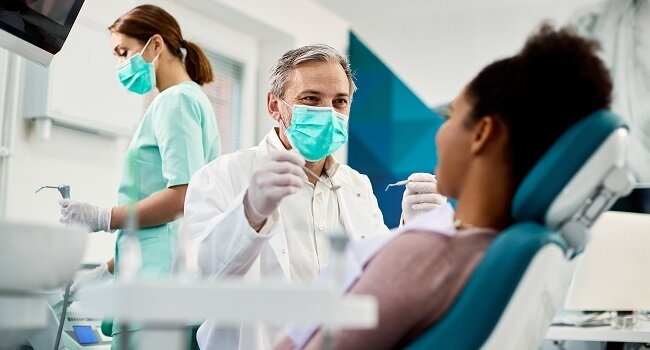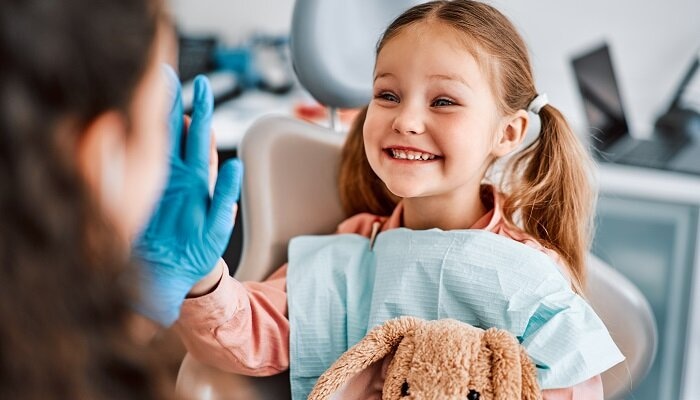Sustainability in healthcare is not merely a trend but a necessity in today’s environmentally conscious world. Emphasizing responsible practices aligns with global efforts to reduce environmental impact. In this context, eco-friendly dentistry emerges as a significant aspect. It marries traditional dental care with sustainable practices, ensuring the well-being of both patients and the planet. This article will delve into the innovative ways current dental practices are adopting to foster a greener and healthier future.
-
Sustainable Materials In Dentistry
The path toward eco-friendly dentistry requires a conscientious choice in materials. A key aspect of this is the use of biodegradable products. Unlike traditional plastics and disposables, biodegradable items break down naturally, reducing landfill waste and lowering the carbon footprint of dental procedures. These products can range from toothbrushes to disposable bibs and cups.
Equally vital is the adoption of non-toxic materials. Dental professionals are moving away from substances that may pose environmental risks. They are now choosing alternatives that not only meet the required safety and performance standards but are also kinder to the Earth. By selecting materials that don’t harm the environment, dental practices are making a profound impact, forging a connection between oral health care and sustainability.
-
Digital Innovations
Digital innovations are reshaping dental care in an eco-friendly direction. One example of this shift is Green Apple Dental in Surrey, where digital X-rays are used to reduce chemical consumption. By replacing traditional film-based methods, these digital techniques eliminate the need for harmful chemicals, making the process safer for both the environment and the patient.
And it’s not just about the X-rays. Many dental practices are going paperless by using online patient forms. Instead of filling out paper forms in the waiting room, patients can do it online. This saves paper and reduces waste.
Both of these digital innovations show how embracing technology can lead to more sustainable practices. Dental offices are using smart, simple ideas to make a big difference, and that’s good news for everyone.
-
Energy Conservation In Dental Practices
Energy conservation forms a critical aspect of sustainability, and dental practices are increasingly acknowledging this role. Implementing energy-efficient lighting and equipment not only reduces power consumption but also contributes to a more sustainable practice. Modern, low-energy lighting solutions, coupled with dental equipment designed for optimal energy use, are pivotal in diminishing overall energy demands.
In addition to utilizing energy-saving devices, many dental offices are now embracing renewable energy sources like solar power. Harnessing the sun’s energy offers a clean, inexhaustible alternative to traditional electricity. Dental practices that invest in solar panels or other renewable energy systems underscore a commitment to the environment. This reflects a broader movement within healthcare to reconcile effective patient care with ecological responsibility.
-
Water Preservation Techniques
Water is a vital resource in dental care, utilized in everything from patient care to equipment cleaning. However, its judicious use is equally essential.
Many dental offices are now integrating water-saving devices. Faucets with sensors, low-flow valves, and efficient sterilization units are not just innovative but responsible. They significantly cut down on water waste.
Recycling water in dental procedures is another noteworthy approach. Systems that allow the reuse of treated water can be both cost-effective and environmentally friendly. The advent of this method showcases the industry’s commitment to preserving a crucial resource.
-
Waste Reduction Methods
Waste reduction is becoming a big focus in dental offices, and there are two primary ways this is happening: recycling and reducing single-use items.
Recycling isn’t just about paper and plastic. In the dental world, even specific waste like metal parts can be recycled. Some dental practices even compost biodegradable waste, turning it into something useful instead of sending it to a landfill.
Then there’s the issue of single-use items. Dental practices are getting smart about this, swapping out disposable items for reusable ones wherever possible. This simple switch can make a huge difference, not just in the trash generated but also in the message it sends about being responsible.
-
Educating Patients And Staff
Eco-friendly dentistry isn’t just about using the right tools and methods; it’s also about educating people. Both patients and staff have important roles to play.
For patients, many dental offices are starting to offer tips and encouragement to embrace eco-friendly practices. This might be as simple as using a biodegradable toothbrush or turning off the tap while brushing. Small changes can make a big difference, and patients are often eager to get on board once they understand the impact.
Then there’s the staff. Training them on sustainability is key to making the whole practice more environmentally friendly. This means showing them how to use new tools or procedures that reduce waste and energy use. It’s about building a team that knows why sustainability matters and how to make it part of their daily work.
Conclusion
Eco-friendly dentistry is more than a trend; it’s a response to the urgent call for sustainability. By embracing innovative techniques, from using biodegradable products to educating staff and patients, dental practices are leading the way in environmental stewardship.

The fusion of dental care and ecological responsibility is not just smart but necessary for the planet’s future. This journey toward greener dentistry is a commitment that resonates with modern values, providing a healthier smile for both individuals and the Earth.


















